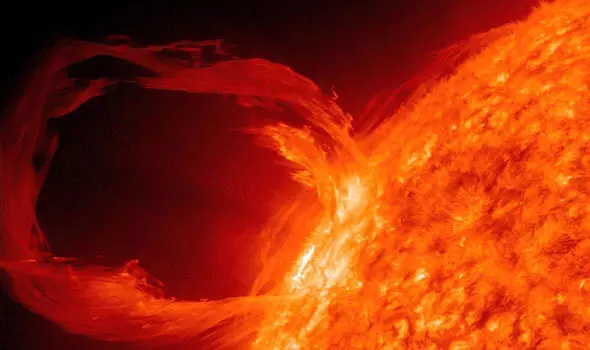
Giant sunspot pointed right at Earth, Doubled in size
text_fieldsA sunspot named AR3038 has appeared on the sun, and it is pointing right at Earth. It has also grown double in size in 24 hours, making it 2.5 times Earth's size.
According to spaceweather.com, the sunspot is now roughly 31,900 km in diameter. "Yesterday, sunspot AR3038 was big. Today, it's enormous. The fast-growing sunspot has doubled in size in only 24 hours," wrote the website tracking the sun's surface.
The giant spot has an unstable 'beta-gamma' magnetic field that harbors energy for medium-sized solar flares. They take eight minutes to reach the Earth. When these hit Earth's upper atmosphere, it can cause radio blackouts.
AR3038 is located near the sun's equator. Considering its location, typically, it will take about two weeks for the sunspot to travel across the sun and not face Earth. It is now slightly to the north of the sun's equator and will face Earth for a few more days.
Sunspots are dark patches on the sun's surface. The powerful magnetic fields are created by the flow of electric charges from the sun's plasma. The charges first knot and then suddenly snap. This causes a release of energy which in turn launches a burst of radiation called solar flares. These generate explosive jets of solar material called coronal mass ejections (CMEs).
The European Space Agency said the giant sunspot is not as scary as it seems despite its alarming growth. "It may cause brief radio blackouts in Earth's polar regions and minor radiation storms".
Scientists have known about and have been observing solar activity since 1775. It rises and falls in accordance with a cycle that roughly lasts 11 years. However, experts think the sun has been more active lately than expected. Nearly double the sunspots predicted by the National Oceanic and Atmospheric Administration (NOAA) have appeared.
Scientists think the solar activity is set to increase in a steady manner for the next few years before falling in 2025.






















